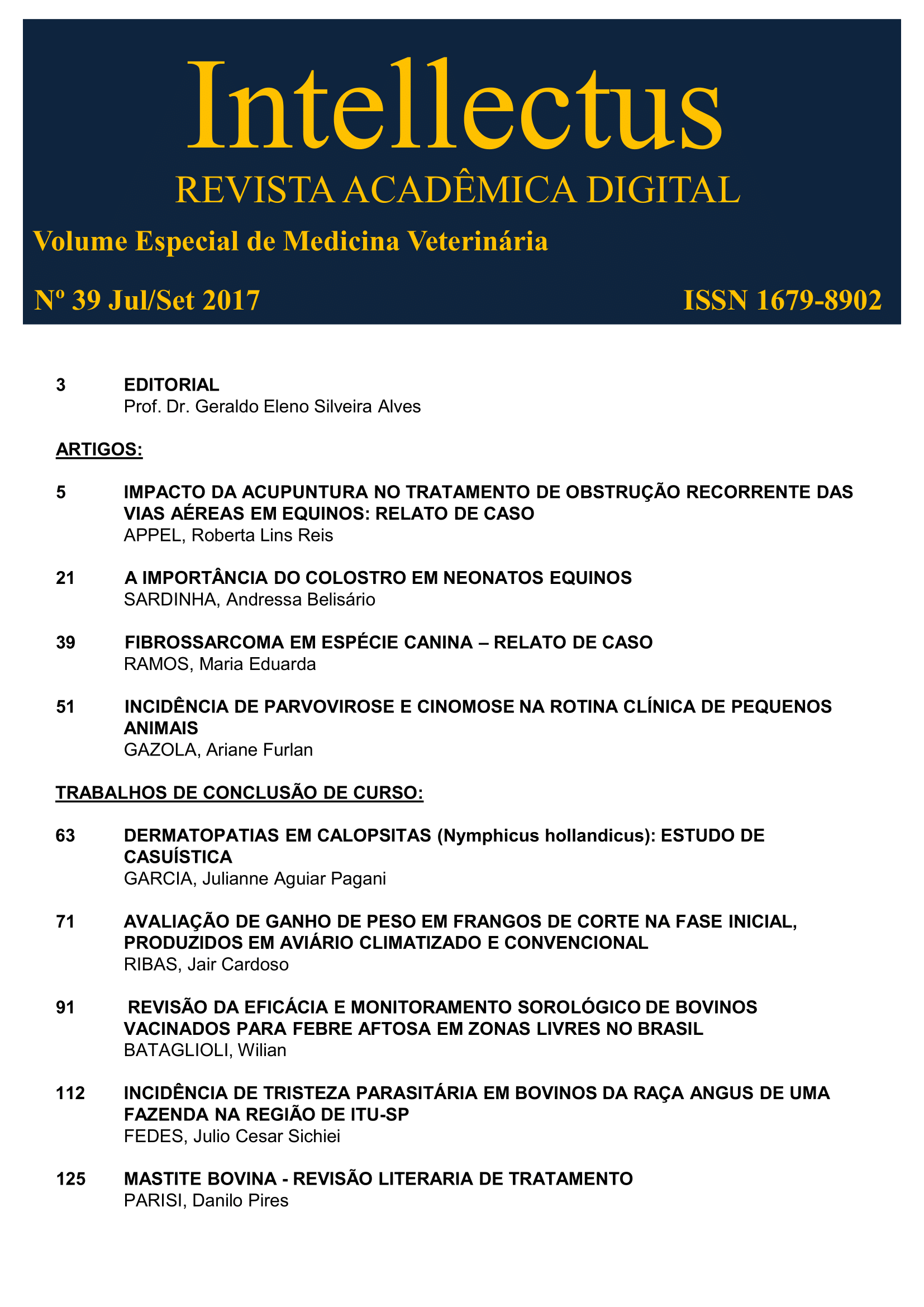INFLUÊNCIA DA DEXAMETASONA SOBRE LEUCÓCITOS DE BEZERROS ORIUNDOS DA TÉCNICA DE TRANSFERÊNCIA NUCLEAR
Palavras-chave:
clonagem, bezerros, dexametasonaResumo
A clonagem animal ganhou grande importância na Medicina Veterinária, não só por agregar alto valor tecnológico à veterinária, mas também pelo positivo impacto financeiro no Agronegócio. Entretanto, ainda que as técnicas de clonagem estejam aprimoradas, elas não alcançam o máximo de sua eficiência, haja vista que muitos clones bovinos não resistem ao primeiro mês de vida. Alguns dos fatores associados as mortes neonatais dizem respeito a ocorrência de diversos distúrbios metabólicos, fisiológicos e/ou imunológicos que podem acometer os clones neonatos. O objetivo deste trabalho foi avaliar qualitativamente e quantitativamente os leucócitos de bezerros oriundos da técnica de transferência nuclear (TN) e a influência da dexametasona, utilizada como indutor do parto, nestas células, afim de avaliar o papel destes fatores nas primeiras horas de vida do clone. Foram realizadas coletas de sangue (3 a 5 ml) por punção da veia jugular, de 15 bezerros clonados em uma empresa do interior do estado de São Paulo. Não houve seleção prévia de animais quanto ao sexo ou raça. Todos os clones nascidos durante o período estabelecido para o experimento foram submetidos às coletas, que ocorreram imediatamente após o parto (0 horas – (T0)), 24 (T1) e 48 horas (T2) após o parto. Outras três coletas foram realizadas com intervalos de 7 dias (T3, T4 e T5). A confecção do esfregaço sanguíneo foi realizada pela técnica da cunha ou deslizamento, seguida da coloração das lâminas pela utilização de panótico rápido, estabelecida por Romanowsky. As amostras foram avaliadas por análise microscópica dos elementos celulares. Para a contagem total foi utilizada a técnica de contagem manual em câmara de Neubauer, tendo solução de Turk como diluente. A contagem diferencial foi feita com 100 células no corpo da lâmina corada. Os dados foram analisados pelo PROC MIXED (SAS, versão 9.2, 2010), para comparação das médias foi utilizado o teste de Tukey e foram consideradas diferenças estatísticas quando P<0,05. Dos animais avaliados, 2 morreram antes de completar 24 horas, enquanto outros 2, após completarem 48 horas. Dos 15 clones avaliados, a dexametasona foi utilizada como indutor do parto em 10 deles, dos quais, 9 nasceram de cesariana e 1 de parto normal. Dos demais 5 clones não induzidos com dexametasona, 3 nasceram de cesariana e 2 de parto normal. No momento do nascimento (coleta 0h) o grupo não induzido apresentou maiores valores de precursores mielóides (6,74±1,03) que o grupo induzido (1,60±0,32) (P=0,009), no entanto, 24horas após o nascimento, essa diferença não foi aparente (não induzido; 2,74±1,18; induzido 1,76±0,41) (P=0,838). Os precursores mieloides são encontrados na circulação periférica, em casos de inflamações ou injúrias. O fato de o grupo induzido ter apresentado menor número desses precursores, pode ser um indicativo da ação da dexametasona como indutor da maturação fetal, demonstrando o potencial deste fármaco para contribuir positivamente com a saúde do clone nas primeiras horas de vida.



